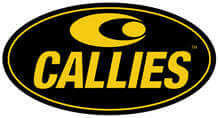
MS Access As A Dev Tool
Access continues to be a highly efficient tool for business database development.
The Best Microsoft Access Database Solutions owner, consultant, and principal programmer is Alison Balter - a recognized expert Microsoft Access consultant. Alison is the author of 15 Microsoft Access training books and videos. She is a frequent guest speaker at MS Access conferences and has developed hundreds of applications for businesses of all types.
We know your business data is important; we listen to your concerns, ask questions, and gather information from all stake holders. We discuss your needs and requirements for your database. We find out what you want, why you need various features so we can obtain as much information as possible. Once we have the information we need, we work with you to design the proper database architecture, plus the dashboards, the questions (queries), forms, and reports you need for an excellent database system.

We also create websites designed for speed to display your data accurately, using ASP.NET technology. Fast, secure, and robust, our ASP.NET web sites and web applications give you true business tool for finding and displaying information dynamically on the web.






Access continues to be a highly efficient tool for business database development.

How to create a Microsoft Access application with some unique tips and tricks.

Your Access developer near me has some great info for you about using Access efficiently.
Call MS Access Solutions at (323) 285-0939 For Complimentary Consultation
Getting to Know the Database Objects Tables, queries, forms, reports, macros, and modules combine to comprise an Access database. Each of these objects has a special function. An Access application also includes several miscellaneous objects, including relationships, database properties, and import/export specifications. With these objects, you can create a powerful, user-friendly, integrated application. Figure 1.1 shows the Access application window. Notice the categories of objects listed in the Navigation Pane. The following sections take you on a tour of the objects that make up an Access database.
Tables: A Repository for Your Data Tables are the starting point for your application. Whether your data is stored in an Access database or you are referencing external data by using linked tables, all the other objects in your database either directly or indirectly reference your tables. To view all the tables that are contained in the open database, select Tables from the Navigation Pane drop-down. Note that you won't see any hidden tables unless you have checked the Hidden Objects check box in the Navigation Options dialog box. If you want to view the data in a table, double-click the name of the table you want to view.
Access displays the table's data in a datasheet, which includes all the table's fields and records. Note that I have collapsed the Navigation Pane so that you get a better view of the table. You can modify many of the datasheet's attributes and even search for and filter data from within the datasheet. If the table is related to another tables, you can also expand and collapse the subdatasheet to view data stored in child tables.
As a developer, you most often want to view the table's design, which is the blueprint or template for the table. To view a table's design, click the View icon on the home page of the ribbon while the table is open. In Design view, you can view or modify all the field names, data types, and field and table properties. Access gives you the power and flexibility you need to customize the design of your tables.
Relationships: Tying the Tables Together To properly maintain your data's integrity and ease the process of working with other objects in the database, you must define relationships among the tables in your database. You accomplish this by using the Relationships window. To view the Relationships window, click to select the Database Tools tab. Then select the Relationships button in the Show/Hide group. The Relationships window appears.
In this window, you can view and maintain the relationships in the database. If you or a fellow developer has set up some relationships, but you don't see any in the Relationships window, select the All Relationships button in the Relationships group on the Design tab to unhide any hidden tables and relationships. Many relationships have a join line between tables with a number 1 and an infinity symbol (∞). This indicates a one-to-many relationship between the tables.
If you double-click the join line, the Edit Relationships dialog box opens. In this dialog box, you can specify the exact nature of the relationship between tables. The relationship between Customers and Orders, for example, is a one-to-many relationship with referential integrity enforced. This means that the user cannot add orders for customers who don't exist. Notice that the check box to Cascade Update Related Fields is not checked. This means that the user cannot update the CustomerID of a customer in the Customers table. Because Cascade Delete Related Records is not checked, the user cannot delete customers from the Customers table if they have corresponding orders in the Orders table.
This material originally appeared in Alison Balter's book Mastering Microsoft Office Access 2007 Development. Reprinted here by author's permission.
When you need a Microsoft Access programmer for your Fresno CA business, call MS Access Solutions at (323) 285-0939. We have over 25 years experience in Microsoft Access programmer solutions. We create Access database applications for all sectors, consisting of hospitals, government agencies, the U.S. military, universities, agriculture, workers services, and insurance provider. We can take care of the most advanced as well as complicated Access and also SQL Server database programming for your business as well as smaller projects, like fixing damaged Access database forms, MS Access reports, Access macros, and VBA code.
More Access programmer cities we serve: Access Programmer Los Angeles CA

